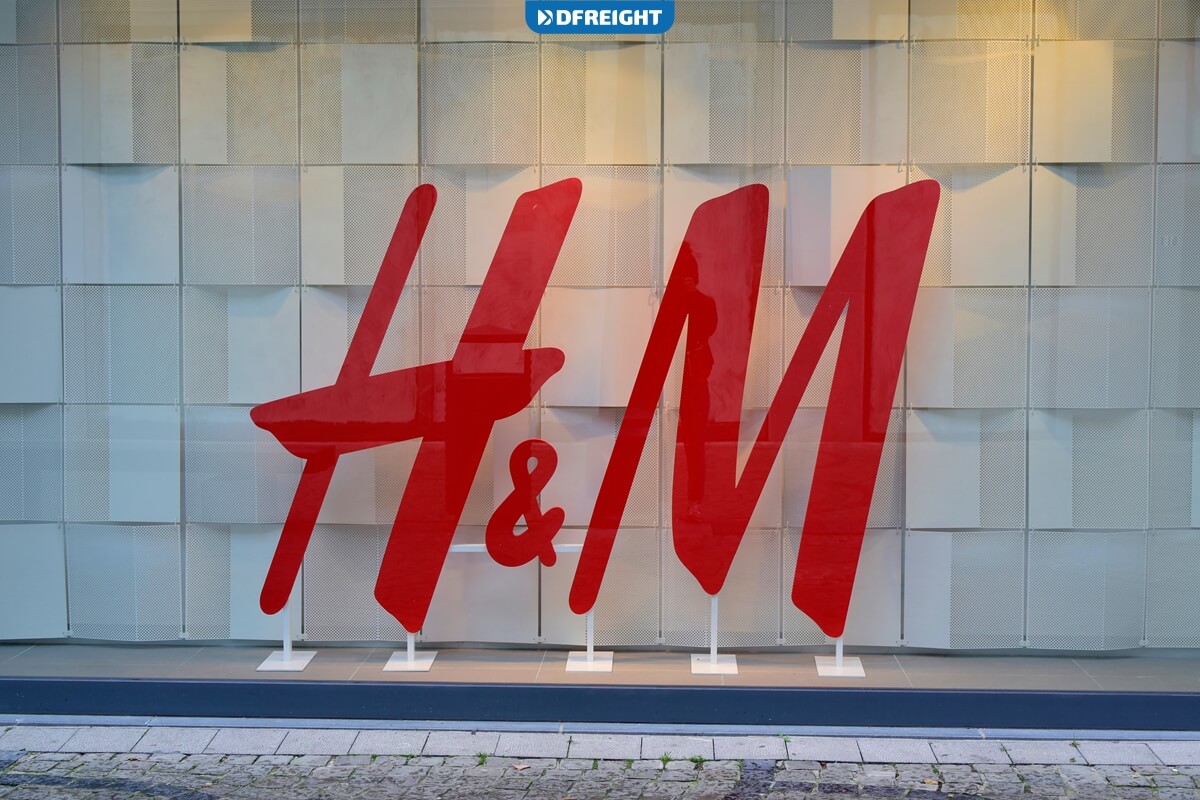H&M, a global retail giant, has revolutionized the fast fashion industry with its efficient supply chain operations. It has revolutionized the fast fashion industry through its efficient supply chain operations. H&M supply chain strategy ensures operational efficiency, sustainability, and customer satisfaction. Key elements include strategic sourcing, efficient production, optimized distribution, and effective inventory management. H&M’s commitment to sustainability is evident in its eco-friendly practices and responsible sourcing partnerships. By leveraging technology and innovation, they enhance supply chain visibility and agility. H&M’s holistic approach enables them to overcome industry challenges while delivering fashionable and affordable clothing to a global customer base.
Take your supply chain management to the next level with DFreight, a leading digital freight forwarder. With our user-friendly online platform and mobile app, you can streamline your logistics processes, enhance efficiency, and gain real-time visibility and control over your shipments. Experience the power of digital innovation in supply chain management by partnering with DFreight today.
This article will unravel the different aspects of H&M supply chain strategy. By exploring the various stages of their supply chain, we aim to showcase the key elements that contribute to H&M’s success in delivering affordable and trendy fashion to millions of customers worldwide. Join us as we uncover the secrets behind H&M’s supply chain strategy and its impact on the fashion industry.
Table of Contents
Importance of Supply Chain Strategy in the Fashion Industry
The fashion industry operates in a fast-paced and dynamic environment characterized by ever-changing trends, demanding customers, and intense competition. In this context, an effective supply chain strategy becomes crucial for fashion companies to succeed and thrive. Supply chain strategy encompasses the entire process from sourcing raw materials and manufacturing to distribution and retailing. It ensures that the right products are available at the right time, in the right quantities, and at suitable locations while optimizing costs and minimizing risks.
By implementing a robust supply chain strategy, fashion companies can streamline their operations, enhance efficiency, reduce lead times, improve customer satisfaction, and ultimately gain a competitive edge. It also plays a significant role in addressing sustainability challenges and ethical concerns by promoting transparency, responsible sourcing, and eco-friendly practices throughout the supply chain.
In the previous blogs, we looked into the supply chains of famous and leading companies, which you can read about each of them in the section below.
| Nike | Coca-Cola | Zara |
| Apple | Toyota | L’Oréal |
| Intel | Starbucks | Cisco |
| Amazon | Tesla | KFC |
| Adidas | Nestle | Costco |
| Samsung | Unilever | Honda |
| ADNOC | Schneider Electric | BMW |
| Pepsi | McDonald | Walmart |
| McDonald |
H&M Supply Chain Strategy
H&M, the global fashion giant, boasts a vast and complex supply chain that spans multiple continents and involves numerous stakeholders. A comprehensive overview of H&M’s supply chain reveals its meticulous sourcing, production, distribution, and inventory management approach.

Starting with sourcing and procurement, H&M strategically partners with suppliers worldwide, ensuring a diverse range of high-quality materials at competitive prices. This network of suppliers allows H&M to maintain flexibility and adapt to shifting market demands efficiently. The company also emphasizes ethical and sustainable sourcing practices, ensuring fair wages, safe working conditions, and environmentally responsible production processes.
Regarding production and manufacturing, H&M leverages a mix of in-house and outsourced manufacturing. The company collaborates with many factories globally, focusing on long-term relationships and fostering a transparent and responsible manufacturing ecosystem. H&M maintains strict quality control standards to ensure consistency and craftsmanship across its product lines.
Efficient distribution and logistics operations form another critical aspect of H&M’s supply chain strategy. The company operates a sophisticated distribution network, including regional distribution centers and cross-docking facilities, enabling timely delivery of products to its stores worldwide. H&M leverages advanced logistics technologies and optimization algorithms to streamline transportation and minimize lead times, ensuring fashion trends reach the market swiftly.
Inventory management and stock control are critical factors in H&M’s supply chain success. The company employs data-driven forecasting techniques and real-time analytics to anticipate consumer demand accurately. This enables H&M to optimize inventory levels, minimize excess stock, and reduce the risk of markdowns. Furthermore, H&M’s fast-fashion business model revolves around quick inventory turnover, driving continuous replenishment and regular product refreshes to keep up with rapidly changing consumer preferences.
Overall, H&M’s comprehensive supply chain overview highlights its commitment to efficiency, sustainability, and responsiveness. By strategically managing sourcing, production, distribution, and inventory, H&M maintains a competitive edge in the fashion industry, delivering fashionable and affordable clothing to customers worldwide while ensuring responsible and ethical practices throughout its supply chain.
Fast Fashion and Sustainability: H&M’s Approach
H&M has recognized fast fashion’s environmental and social challenges and has taken significant steps to address sustainability concerns. The company has implemented various initiatives to minimize its environmental footprint and promote responsible consumption. H&M is committed to using sustainable materials, such as organic cotton, recycled polyester, and innovative fibers made from renewable sources.
They also actively promote recycling and offer garment collection programs to encourage customers to return unwanted clothing for reuse or recycling. H&M has set ambitious targets to become fully circular and climate-positive by 2030, aiming to use only recycled or sustainably sourced materials and reduce greenhouse gas emissions throughout its value chain. Through these efforts, H&M strives to balance fast fashion and sustainable practices, driving positive change within the fashion industry.
Technology and Innovation in H&M’s Supply Chain
H&M leverages technology and embraces innovation to enhance efficiency and optimize its supply chain operations. The company recognizes the transformative power of technology in improving speed, accuracy, and visibility throughout the supply chain. H&M utilizes advanced analytics and artificial intelligence to analyze vast amounts of data, enabling more accurate demand forecasting, inventory optimization, and trend analysis. They have also embraced digitalization and automation in their supply chain, employing technologies like RFID tagging and automated sorting systems in distribution centers to streamline processes and improve inventory management.
Additionally, H&M leverages technology to enhance supplier collaboration and transparency, utilizing digital platforms for communication, order tracking, and performance monitoring. By harnessing the power of technology and embracing innovative solutions, H&M continues to drive operational excellence and stay at the forefront of the fashion industry.
Collaborations and Partnerships: Strengthening the Supply Chain
Collaborations and partnerships play a vital role in strengthening H&M’s supply chain. The company recognizes that building strong relationships with suppliers, manufacturers, and other stakeholders is crucial for achieving operational efficiency and sustainability. H&M actively engages in collaborative efforts with its suppliers, fostering open communication channels and promoting transparency. By working closely, H&M and its partners can align their goals, share best practices, and collectively address challenges.
The company also seeks sustainable partnerships, collaborating with organizations and initiatives that promote ethical sourcing, fair labor practices, and environmental responsibility. These collaborations and partnerships strengthen the supply chain and drive positive change in the industry by promoting responsible business practices and fostering innovation.
Challenges and Future Trends in H&M’s Supply Chain Strategy
H&M’s supply chain strategy faces various challenges and must adapt to future trends in the ever-evolving fashion industry. One significant challenge is the growing demand for sustainability and ethical practices. H&M must continue prioritizing sustainable sourcing, reducing waste, and implementing circular economy initiatives to meet consumer expectations and address environmental concerns.
Additionally, the rise of e-commerce and omnichannel retailing presents challenges in inventory management, order fulfillment, and last-mile delivery. H&M must invest in robust technology and logistics solutions to optimize these processes and provide seamless customer experiences.
Furthermore, geopolitical factors, trade regulations, and disruptions such as natural disasters or global pandemics can impact supply chain operations. H&M must enhance its agility and resilience through diversified sourcing, contingency planning, and real-time monitoring to mitigate these risks.
Embracing emerging technologies like blockchain, automation, and artificial intelligence will also be crucial in shaping the future of H&M’s supply chain strategy, enabling greater visibility, efficiency, and responsiveness in the face of evolving industry trends.
Conclusion
In conclusion, H&M’s comprehensive supply chain strategy highlights its critical role in the success of fashion companies. With an intricate network spanning sourcing, production, distribution, and inventory management, H&M showcases the importance of an effective supply chain in meeting customer demands, reducing costs, enhancing sustainability, and gaining a competitive edge. By strategically managing every aspect of the supply chain, H&M ensures timely delivery, quality products, and responsible practices throughout the value chain. Moreover, the challenges and future trends in the fashion industry further underscore the need for continuous adaptation and innovation in supply chain strategies.
In a rapidly evolving landscape, a well-crafted and agile supply chain strategy is essential for fashion companies to navigate complexities, seize opportunities, and thrive in a dynamic marketplace.
How does H&M manage its global supply chain?
H&M’s global supply chain is undoubtedly vast and intricate. To effectively manage this complexity, H&M employs a sophisticated network of suppliers and logistics partners. They utilize advanced technology systems for inventory management, demand forecasting, and logistics optimization. Regular communication and collaboration with suppliers, along with rigorous quality control measures, help ensure efficient production and timely delivery of products across different markets worldwide.
How does H&M ensure timely delivery of products to its stores worldwide?
H&M optimizes distribution and logistics through a sophisticated network of regional distribution centers and advanced logistics technologies. They leverage data-driven forecasting and real-time analytics to ensure timely product delivery.
How does H&M leverage technology and innovation in its supply chain strategy?
H&M leverages technology and innovation to enhance supply chain efficiency and visibility. They use advanced analytics, artificial intelligence, and digital platforms to improve demand forecasting, optimize inventory management, and enable efficient communication and collaboration with suppliers.
What steps does H&M take to promote sustainability throughout its supply chain?
H&M promotes sustainability by using sustainable materials like organic cotton and recycled polyester. They offer garment collection programs and set ambitious targets to become fully circular and climate-positive by 2030, emphasizing recycled or sustainably sourced materials and reducing greenhouse gas emissions.














